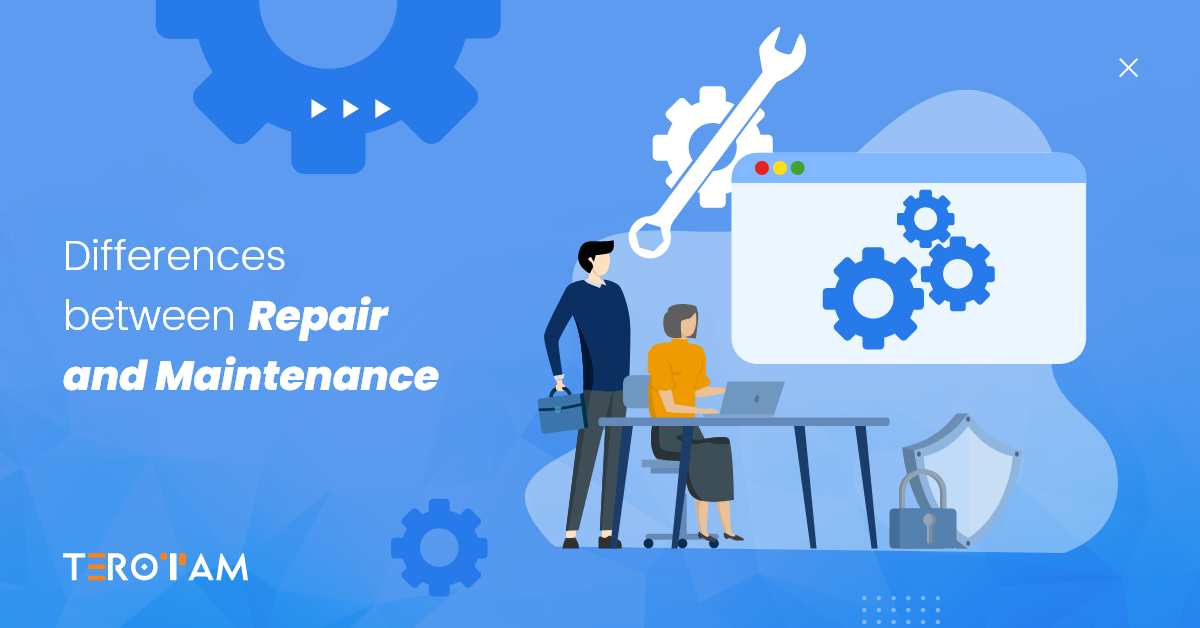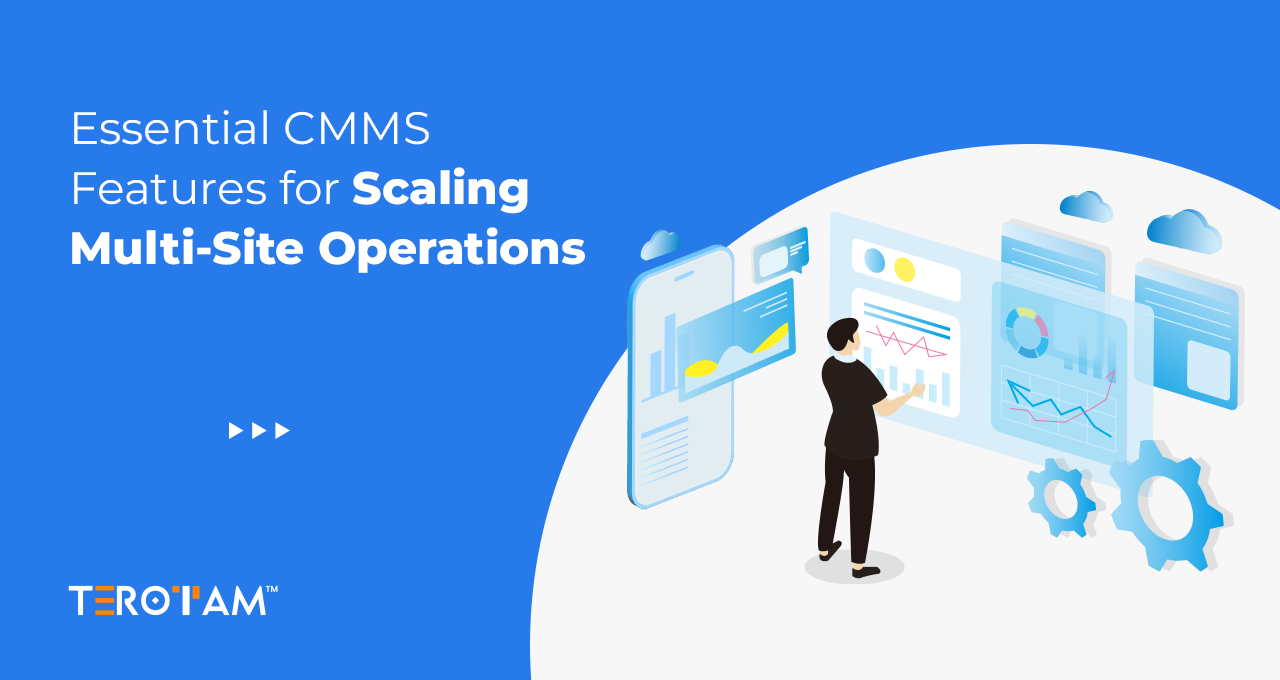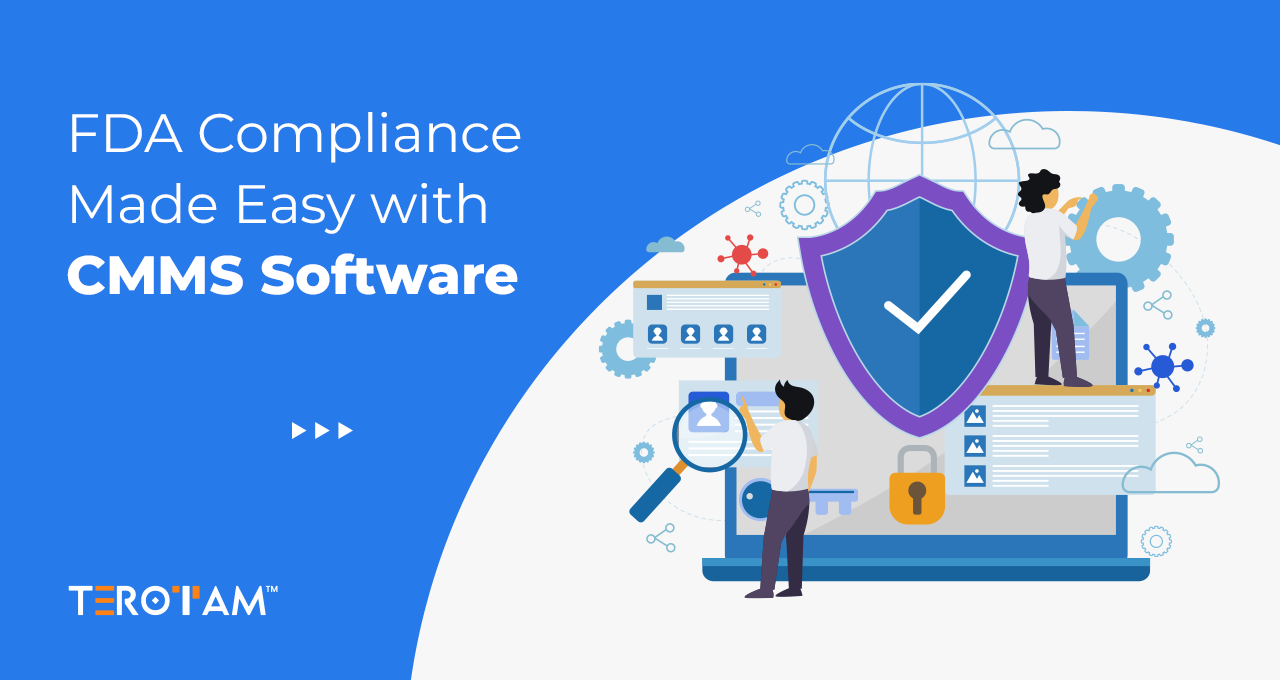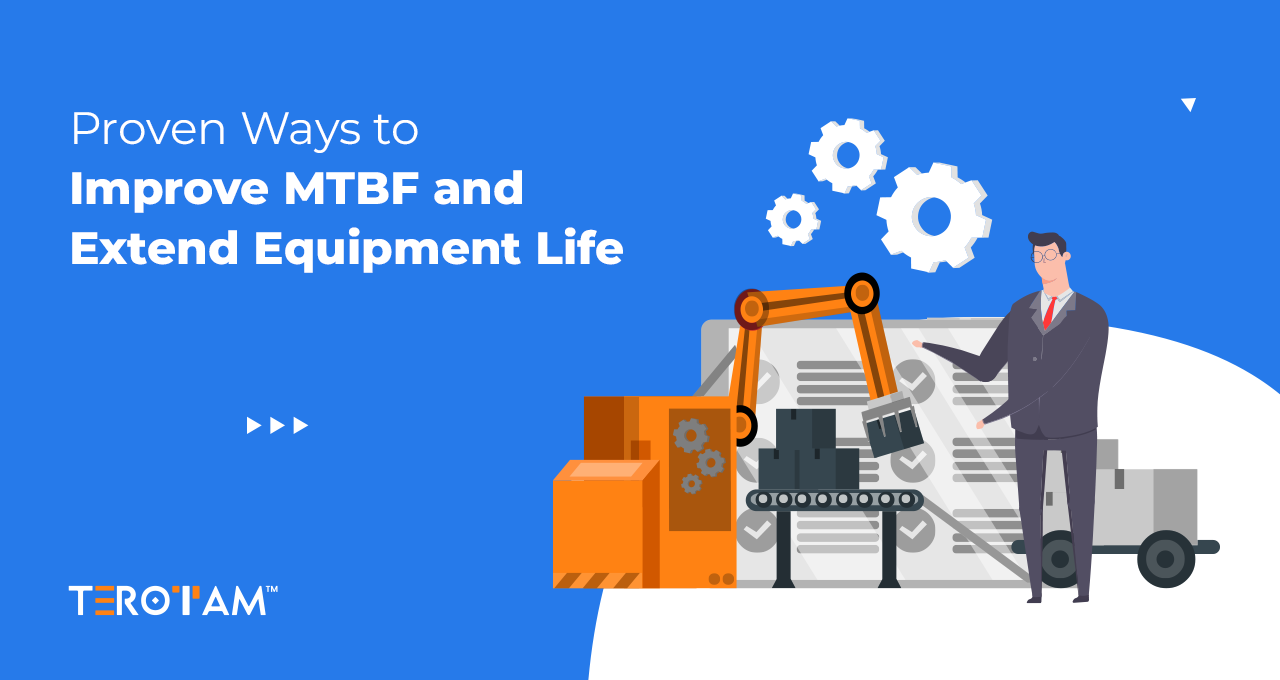The terms “repairs” and “maintenance” are regularly employed in any context involving machinery, equipment, or structures. Despite their apparent similarity, they each stand for a different facet of operational effectiveness and asset management.
We’ll examine the distinctions between repairs and maintenance in this article, comprehend their relevance, and consider how preventive maintenance might speed up both procedures. Above that, we’ll discuss how Computerized Maintenance Management Systems (CMMS) help to streamline repair and maintenance operations.
So, let’s get started and deeply dive into this utterly important conceptual discussion.
What is Repair?
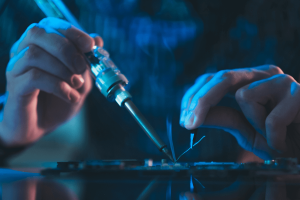
Repair is the process of putting anything back together again after it has been damaged, broken, or deteriorated in order to get it back to how it was before. It often covers preventative steps implemented to address specific problems that have already arisen. Depending on the severity of the issue, it can range from modest tweaks to substantial overhauls. They attend to urgent issues and work to restore the asset’s operational status.
Key Elements of Repair
- Diagnosis and Assessment: Identifying the problem’s root cause through careful analysis and examination.
- Parts and Components Replacement: Replacing damaged or worn-out components with suitable replacements.
- Skilled Labor and Expertise: Employing knowledgeable technicians with the expertise to carry out intricate repairs.
- Tools and Equipment: Using appropriate tools and equipment to disassemble, repair, and reassemble the asset.
- Testing and Validation: Thoroughly testing the repaired asset to ensure proper functionality.
- Documentation and Reporting: Keeping detailed records of the repair process, actions taken, and outcomes.
- Time and Cost Management: Efficiently managing time and resources to minimize downtime and costs.
- Emergency Response: Implementing swift response measures for critical failures, ensuring rapid restoration.
What is Maintenance?
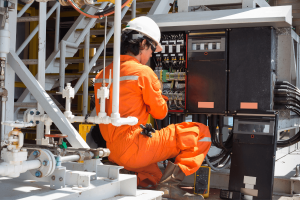
On the other hand, maintenance covers a wider range of tasks intended to maintain assets’ usefulness, dependability, and longevity over time. Both preventive and remedial actions are part of maintenance. Preventive maintenance involves routine checks, cleaning, lubrication, and small repairs to stop problems before they start.
In order to reduce downtime and assure continuous operation, corrective maintenance, sometimes referred to as reactive maintenance, entails resolving problems as they arise.
Key Elements of Maintenance:
- Inspection and Monitoring: Regularly examining assets to detect wear, potential issues, and deviations from optimal performance.
- Cleaning and Lubrication: Cleaning and applying lubricants to prevent dirt buildup and maintain smooth operation.
- Calibration and Adjustment: Ensuring equipment is calibrated and adjusted to maintain accuracy and efficiency.
- Preventive Repairs: Addressing minor issues before they escalate to major problems, minimizing downtime.
- Scheduled Maintenance: Planning maintenance activities based on manufacturer recommendations or usage intervals.
- Record Keeping: Maintaining comprehensive records of maintenance tasks, dates, and outcomes.
- Risk Assessment: Identifying potential risks and implementing measures to mitigate them.
- Training and Skill Development: Continuously improving the skills of maintenance personnel to adapt to evolving technologies.
- Spare Parts Management: Managing inventory of critical spare parts to ensure quick replacements.
- Performance Analysis: Analyzing asset performance data to optimize maintenance strategies over time.
Key Differences Between Repairs and Maintenance
Focus and Scope of Work:
Repair: The focus of repair is centered on addressing a specific issue that has already compromised the asset’s functionality. It entails troubleshooting the problem, identifying the root cause, and implementing corrective actions to rectify it.
Maintenance: Maintenance encompasses a broader spectrum of tasks. It includes routine actions such as inspections, cleaning, lubrication, and adjustments to ensure that assets continue to operate smoothly and efficiently.
Purpose and Timing:
Repair: Repair is reactive and initiated in response to an existing problem or malfunction. Its primary aim is to restore an asset to its original operational state after a failure or breakdown has occurred.
Maintenance: Maintenance is proactive and premeditated. It involves a series of planned activities aimed at preventing issues before they occur. Maintenance tasks are executed regularly to ensure assets remain in optimal working condition.
Timing of Execution:
Repair: Repairs are conducted only when an asset has malfunctioned or failed, leading to operational downtime until the issue is resolved.
Maintenance: Maintenance tasks are scheduled periodically, often during planned downtime or non-peak hours, to minimize disruption to regular operations.
Cost and Resources:
Repair: Repairs can be costlier, especially for significant issues, as they often involve replacing parts and specialized labor to fix the immediate problem.
Maintenance: Maintenance activities are generally less resource-intensive and cost-effective in the long run. The investment in preventive maintenance can help avoid expensive repairs by identifying and addressing issues before they escalate.
Preventive vs. Reactive Nature:
Repair: Repair is reactive in nature, responding to problems that have already emerged.
Maintenance: Maintenance is preventive, focusing on averting issues before they arise through regular checks and adjustments.
Repair or Maintenance – Which one is better in which situation?
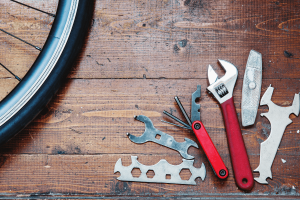
The context, urgency, and desired outcomes in various operational situations determine whether to repair something or keep it maintained. Understanding when to use each method can greatly impact an asset’s performance, cost-effectiveness, and longevity even though both play important roles.
Let’s discuss here some practical situations which help us explain the importance of both in the respective practical fields.
Sudden Breakdown
Think of a manufacturing unit whose output is abruptly stopped by the failure of a critical conveyor belt. The quick fix in this situation is repair. Since the breakdown has already happened, resuming operations now is the top priority. Diagnosing the issue, replacing the broken parts, and regaining the conveyor belt’s functionality constitute repair.
Preventive Measures
Take into consideration a logistics company’s delivery fleet. Adopting a maintenance strategy is essential to avoiding unexpected breakdowns during periods of high delivery demand. Regular maintenance, such as planned inspections, oil changes, tire rotations, and brake system checks, aids in identifying and resolving problems before they become major failures.
The risk of unexpected breakdowns is lower because of this proactive strategy, which also guarantees that the cars are always ready for the road.
Equipment Calibration
In a scientific laboratory, precision equipment is critical for accurate experiments. Maintaining the accuracy of this equipment is crucial. Regular maintenance involving calibration and adjustments ensure the equipment’s readings remain reliable. However, if a piece of equipment starts providing inaccurate results, it may require repair to fix the underlying issue affecting its precision.
HVAC System
Now let’s talk about the HVAC (Heating, Ventilation, and Air Conditioning) system in a commercial building. The system may function effectively with regularly scheduled maintenance such as filter cleaning, duct inspections, and lubricating moving parts.
However, repair work is required to quickly regain temperature control if the system abruptly fails because of a malfunctioning compressor, but with protective maintenance, such chances of sudden breakdowns get lowered, and unwanted stoppages can be avoided.
IT Infrastructure
For a company heavily reliant on IT systems, preventive maintenance is essential. Regular system updates, data backups, and cybersecurity measures prevent potential disruptions. If a server crashes unexpectedly, repair involves diagnosing the issue, replacing faulty hardware, and restoring data from backups.
How Does a CMMS System Streamlines both Repair and Maintenance?
As industries evolve, embracing CMMS technology becomes pivotal, marking a paradigm shift towards a more intelligent, data-driven, and proactive repair and maintenance management approach. CMMS systems act as digital orchestrators, seamlessly aligning repair and maintenance practices to create a harmonious operational symphony.

1. Streamlined Task Management and Workflows
CMMS solutions act as digital hubs that precisely coordinate tasks. Activities for maintenance and repair are easily scheduled, assigned, and tracked to ensure nothing gets missed. To streamline their workflow and increase efficiency, technicians can obtain precise work instructions, prioritize activities, and receive real-time notifications.
2. Improved Asset Tracking and History
The whole lifecycle of an asset is meticulously recorded by CMMS systems, which serve as historians. Every event, including installation, maintenance, repairs, and decommissioning, is recorded. Making decisions about repair or replacement based on historical data can help with trend analysis, recognizing recurrent problems, and other tasks.
3. Predictive and Preventive Maintenance
Leveraging data analytics, CMMS systems can predict potential failures based on historical patterns and asset performance. Preventive maintenance can be scheduled strategically, averting breakdowns and minimizing the need for reactive repairs. This approach reduces downtime, improves asset longevity, and optimizes maintenance costs.
4. Inventory and Spare Parts Management
The use of CMMS systems to monitor inventory levels, reorder points, and usage trends revolutionize spare parts management. This minimizes downtime brought on by an absence of essential components by ensuring that the appropriate parts are easily accessible for repairs and maintenance.
5. Data-Driven Decision-Making
Data from CMMS systems serves as the decision-making North Star. Managers can examine trends in asset use, repair history, and performance data. Optimizing resource allocation and overall operating efficiency enables data-driven decisions, such as whether to repair or replace an asset.
Conclusion
Repairs and maintenance are two crucial elements that go hand in hand to guarantee operational dependability and efficiency in the field of asset management. While maintenance, especially preventative maintenance, helps stop problems before they start, repairs deal with current difficulties. A well-balanced strategy combining both approaches is necessary to maximize asset longevity and reduce downtime.
Now that CMMS technology is available and enhancing day-by-day, businesses can accelerate their repair and maintenance procedures while making educated decisions and maximizing asset performance for a more profitable future.
Want to know more about how our CMMS solution can help you Elevate your Repair and Maintenance activities and put the right approach when needed in your operations? – Schedule a quick demo with our experts; write us your thoughts and doubts on contact@terotam.com.


